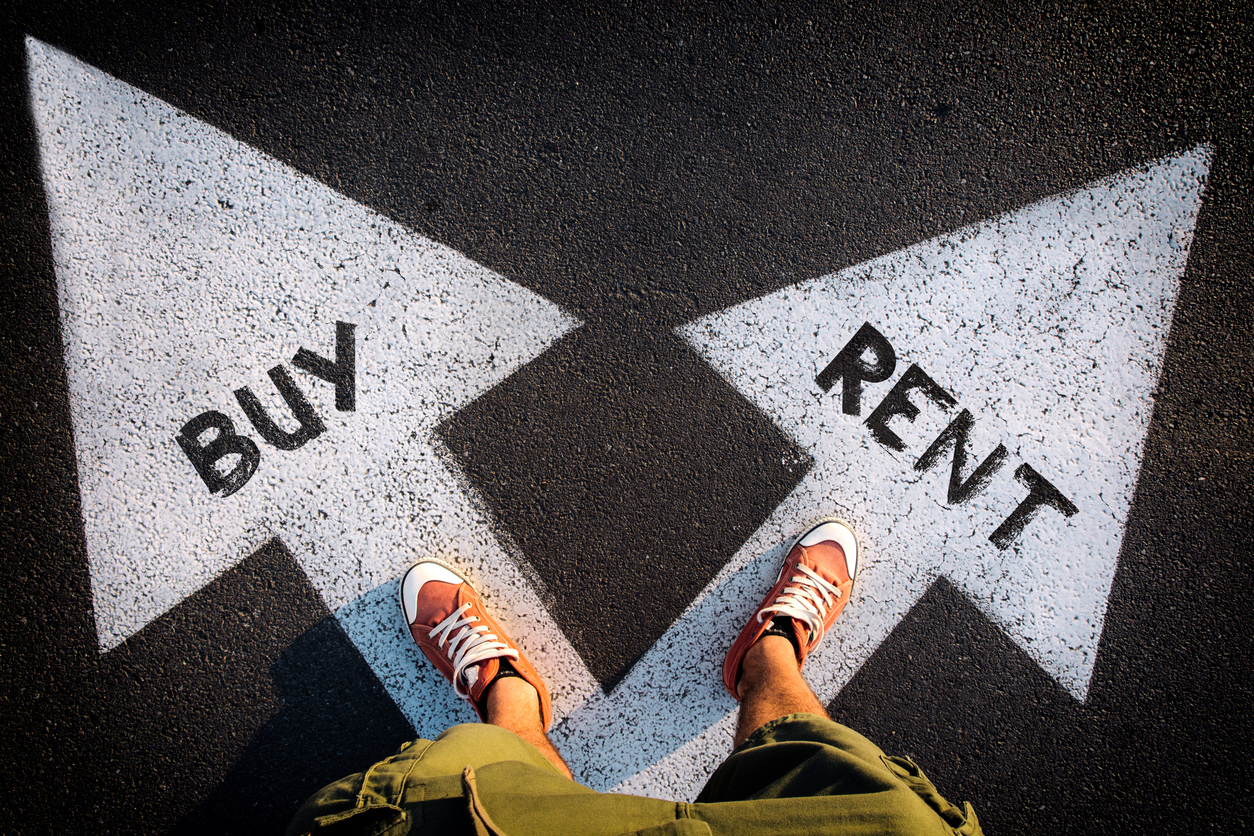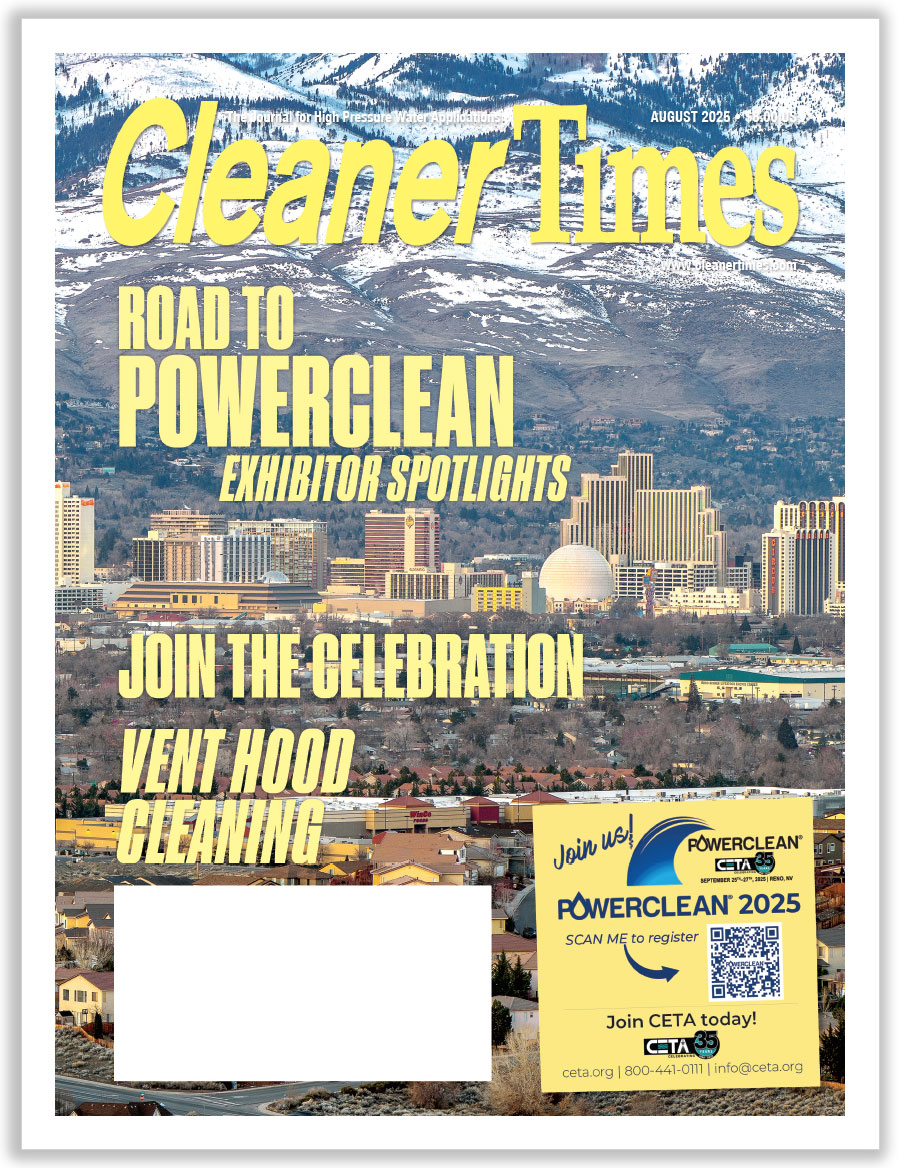
Buying, Renting, or Leasing?
Written by Mark E. Battersby | Published July 2024
Should a pressure washing operation buy, lease, or rent its equipment, vehicles, or facility? Not too surprisingly, the answer usually depends on the operation’s financial situation. And, of course, there are also the new rules governing the accounting treatment of leases that must be considered.
Leasing equipment can be a good option for the owner or owners of a pressure cleaning business with limited capital that needs equipment that must be replaced or upgraded every few years. Purchasing equipment might be a better option for an established business considering equipment that has a long, usable life. Obviously, the decision to buy or lease should be made on a case-by-case basis.
The Basics
When it comes to acquiring equipment, vehicles, or the building that houses the operation, every business has the option of either leasing or buying. As mentioned, leasing might be a good option for a business with limited capital. Leasing means borrowing the equipment, vehicles, or buildings rather than borrowing the money to acquire those business assets.
Leasing requires less commitment than buying and makes it easier to upgrade when the lease term ends. There may, however, be lease restrictions covering what can and can’t be done with the leased property.
Buying means the pressure washing operation purchases and owns the buildings, equipment, and vehicles outright. If funds are tight, there are financing tools available, including the offerings of dealers and distributors. Plus, there is also bank financing with or without SBA guarantees helping overcome the reluctance of a potential lender.
Buying means more commitment since the pressure cleaning operation won’t be able to simply return the property as might be the case when a lease runs out. Of course, it also means the operation can alter, modify, and use the property without restrictions.
Delving Into The Leasing Option
Today almost every type of vehicle, equipment, or property can be leased, with the specific term dependent on the lessor, the type of property, the length of the lease, and more. In general, equipment lease terms include the following:
• Contract periods varying between six months to seven years
• Down payments that are usually low or nonexistent
• Lease payments on a monthly, quarterly, semi-annual, or annual basis. Payment may start low and escalate later in the lease term
• Collateral usually consisting of the leased property, which can be repossessed if the pressure cleaning operation falls behind on payments
• End of the lease possibly requiring the return of the leased property or including a renewal option or the right to buy the equipment.
All Leases Are Not Equal
Among the various types of leases that a contractor or business owner is likely to encounter is a so-called “master lease.” The master lease lets the business lease additional pieces of equipment from a lessor without negotiating new contracts for each one. A master lease might be a good choice for any business anticipating near-term growth.
A recent change in the way leases are treated for accounting purposes changed the way leases are classified and recognized. Before the rule change, leases were either “capital” or “operating” leases; with the new accounting standard, capital leases are now called “finance” leases.
Operating leases remain the same although they are treated differently for accounting purposes. Since the former “capital” lease is no longer specific to one type of lease, the majority of leases will have to be capitalized for accounting purposes except those with a term of 12 months or less.
With a finance lease, the lessee bears the bulk of the risk associated with owning the leased property. A finance lease is an acquisition of an asset that is financed through debt financing, usually for a period comparable to the asset’s expected life.
Operating leases, on the other hand, work much like a rental agreement. While the lessor continues to bear all ownership risk, changes in the accounting rules have changed the liability reporting requirements for balance sheets.
Operating leases, unlike an outright purchase, are usually for shorter periods than the asset’s useful life. In other words, operating leases are used for limited-term leasing of assets and include traditional renting relationships.
Getting Technical With Operating Leases
Equipment operating leases can be structured as follows in a number of ways:
• A fair market value lease is where payments are made and the equipment used during the lease. At the end of the lease, the pressure cleaning operation has the option of buying the equipment at its fair market value, returning it, or renewing the lease. Most often it is used for equipment that quickly loses its value.
• A 10% option lease lets the lessee make payments and purchase the equipment for 10 percent of its initial value or walk away at the end of the lease.
• A terminal rental adjustment clause (TRAC) lease is typically used for trucks and other vehicles. A TRAC lease comes with the option to purchase the vehicle for the agreed-upon residual amount, or the lessor will sell the vehicle to a third party. If the vehicle is sold for less than the residual amount, the lessee will owe the difference.
Equipment Rentals
Renting equipment offers a pressure cleaning business unmatched flexibility, allowing it to pay for an asset when it is needed. Renting obviously benefits smaller operations that cannot afford the cost of equipment maintenance.
Renting and leasing work pretty much in the same way, except with renting the operation signs a contract for a shorter time (usually a year or less) and will not be responsible for maintenance costs. While renting does not offer the option of purchasing the equipment at the end of the rental term, it almost always requires the equipment’s return.
Renting equipment is less expensive than leasing because there is no large down payment required. Plus, rental payments are often considered a tax-deductible operating expense, greatly simplifying accounting. The same might not be true with leases thanks to a recent change in the accounting rules and their impact on an operation’s taxes.
Asc 842
Thanks to a change in the accounting rules, both private and non-profit companies are now required to report leases (and subleases) on their balance sheets. Before ASC 842, operating leases were not included on an operation’s balance sheet, with the result that potential investors and lenders didn’t have a clear picture of the operation’s liabilities.
The new lease accounting standard requires a pressure cleaning contractor or business to include and record all leases longer than 12 months on the operation’s balance sheet as assets and liabilities, increasing the visibility of leasing costs and arrangements.
ASC 842 does not really change how leases are treated for federal income tax purposes, but it does make accounting for leases more difficult, especially when trying to spell out the difference between tax and book income. However, although the federal income tax treatment of leases isn’t impacted by ASC 842, the same can’t be said for state-based franchise taxes, sales and use taxes, and net worth taxes, all of which might be impacted.
Funding To Lease Or Buy
Regardless of the path eventually chosen, funding will be needed for both purchases and leasing. Fortunately there are several options, including the following:
• Traditional bank loans, difficult and expensive today but more accessible and affordable with an SBA guarantee
• Alternative lenders, including specialty lenders, equipment dealers, and distributors as well as online lenders; often more readily available but usually more costly
• Line of credit, which every pressure washing operation should already have in place, or
• Business credit card, quick but quite expensive.
The Decision
Answering the question of whether it is cheaper to lease or to buy depends on a number of factors, such as the cost of the equipment or other property, the length of time it will be used, and of course, the financial health of the pressure cleaning operation.
Both loans and leases allow a business to immediately access equipment and other property, making it possible for those assets to generate revenue, while the operation makes small periodic payments.
Leasing may be more affordable in the short term because of lower monthly payments. Buying can be more cost-effective in the long run as the operation will own the equipment outright after making all payments.
Renting, on the other hand, is best for a pressure cleaning contractor who needs equipment for a short time or is uncertain about its future use, especially for one-time use or seasonal contracts.
A loan to purchase the equipment or property might be better if the operation has the funds for a down payment and hopes to keep the equipment for a long time. A lease is better if the operation doesn’t have sufficient funds to put down, the equipment is only needed for a specific project, or there is a risk of it becoming outdated.
Choosing whether to rent, buy, or lease equipment or property requires a careful evaluation of many facts and circumstances. Professional advice to help answer the question might be advisable.






